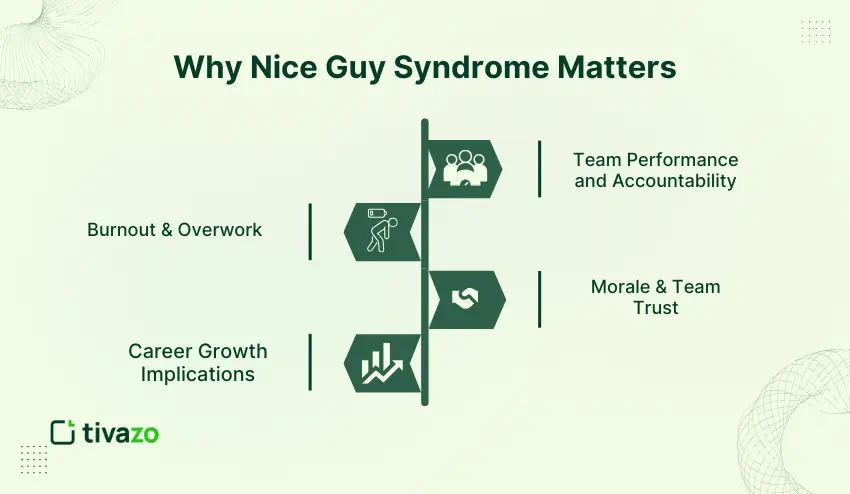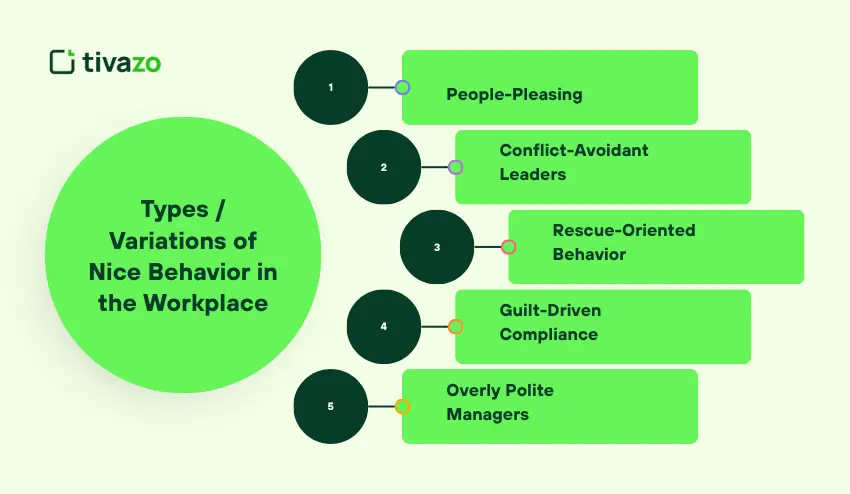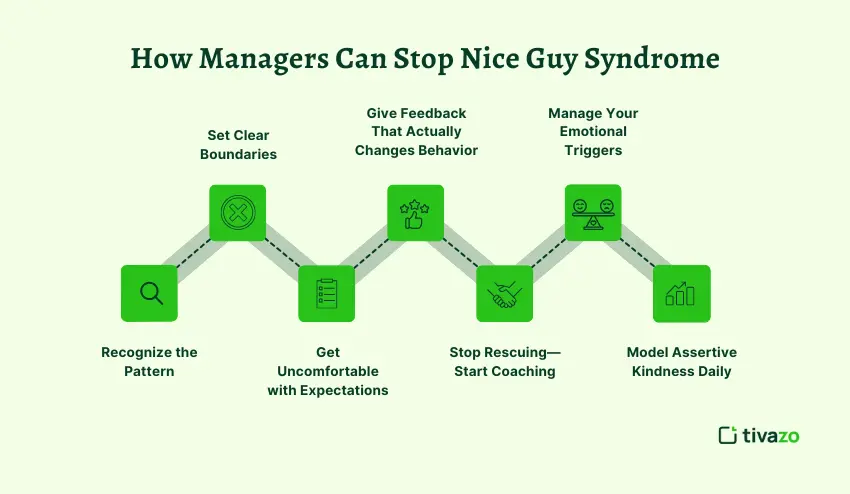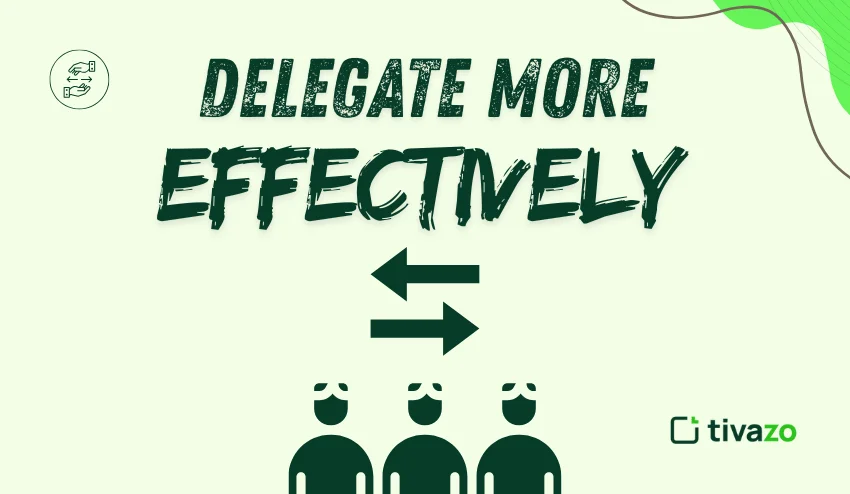Niceness is normally regarded as a virtue at work. However, being too nice can be a curse when it becomes a habit. This is what managers and professionals usually feel about nice guy syndrome.
Most employees and leaders who intend to do well have a hard time saying no, evading conflict, and always putting the needs of others first. The intention is good, but the outcome may be burnout, defaulting on deadlines and even disrespect by co-workers.
We will discuss in this article what the nice guy syndrome is, how to recognize it in yourself or your team, the damage it can do to your personal and business lives, and a seven-step model that managers can use successfully without becoming mean.
What is Nice Guy Syndrome?
Nice guy syndrome is a tendency to people-please, the behavior of people who are more concerned about the approval of others than about their own needs or obligations. It manifests itself in the workplace in the form of not taking sides, saying yes to all the demands and not demanding or even requesting to be rewarded.
Nice guy syndrome can lead to employees or managers overworking and being unable to keep colleagues accountable. Although their intentions are good, this can cause stress, resentment, and decreased team effectiveness. Basically, being nice becomes an invisible hindrance to career advancement and teamwork.
The first step to dealing with this behavior in order to grow as an individual and as an organization is to understand it.
How to Identify Nice Guy Syndrome at Work
The nice guy syndrome is not overt enough to notice in yourself or your team. Nevertheless, its existence can be detected in some of its behaviors and patterns, particularly at work.
Behavioral Signs (Individuals)
- Avoids confrontation or whitewashing feedback to keep others from feeling upset.
- Answers yes to additional work even when already overworked.
- Resents or is frustrated when unappreciated.
Managerial Signs (Leaders)
- Is reluctant to punish team members who miss deadlines or make an error.
- Difficulties in saying no to demands, doing more than is possible.
- Often saves the poor performers rather than dealing with the performance problems.
Emotional Patterns
- The fear of not be liked or criticized by peers.
- Feeling guilty of making demands or establishing limits.
- When frustrated, passive-aggressive.
Mini Table Suggestion:
| Behavior | Workplace Outcome |
|---|---|
| Avoids conflict | Team lacks clarity and accountability |
| Says yes to everything | Overloaded employees and missed deadlines |
| Rescues underperformers | Reduced team productivity and morale |
By recognizing these patterns early, managers can address the root causes and begin shifting toward a healthier, more effective leadership style.
Why Nice Guy Syndrome Matters for Working Professionals & Managers
Nice guy syndrome is not a personal trait, but it may impact team dynamics, productivity, and even career paths directly. It may not look harmful to avoid conflict, overcommit or people-please in a workplace but the consequences can be far-reaching to both the manager and the employee. Being aware of the stakes is key to professional development and organizational wellbeing.

1. Team Performance and Accountability.
Managers with nice guy syndrome will evade difficult conversations or avoid giving feedback quickly, so as not to offend team members. This might sound thoughtful but it makes less accountable. Unclear expectations mean that employees will miss deadlines or perform poorly without repercussions.
Example: A team leader keeps evading to provide a corrective feedback to an employee with low performance. The slack is eventually picked by the rest of the team, morale goes down and project deadlines are always missed.
2. Burnout & Overwork
Nice guy professionals will always have more than they can handle. They say yes to all demands, volunteer in other projects, and attempt to solve the problems themselves. This habit causes hours of work, pressure, and burnout. Over-extensive managers also lead by example to their staff, unwittingly encouraging the overworking culture.
Example: A manager who never declines requests gets involved in the work that can be assigned. Their tasks become overwhelming, and this impacts decision-making and delays team development.
3. Morale & Team Trust
A manager who persistently avoids conflict or prefers to be liked rather than effective may leave his or her team members feeling unsupported or frustrated. Absence of clear direction may result in passive aggressive communication, resentment, and loss of trust. The employees will become detached, lack initiative or priorities.
Example: One of the team members is constantly late in meeting deadlines, and the manager does not address it. The absence of accountability is observed by other employees who no longer respect the authority of the manager, decreasing the morale of the whole team.
4. Career Growth Implications
Nice guy syndrome may also put a career on hold. Individuals who do not engage in aggressive discussions, making tough decisions, or self-promotion could be sidelined when it comes to promotions or important projects. Organizations tend to reward outcomes and executive clarity, rather than consistent niceness.
Example: A very productive manager is always overworked as he/she cannot say no but does not demonstrate his/her successes or impose any expectations. Consequently, they are viewed as responsive and not proactive by leadership, which influences promotion chances.
The Business Impact of Nice Guy Syndrome
Nice guy syndrome is not a benign character trait. It causes quantifiable harm within your organization, whether in missed quarterly goals or runaway turnover expenses.
The effects of leaders focusing on being liked rather than being effective trickle down to all departments. Studies indicate that conflict-avoidant management costs American businesses an estimated 359 billion dollars in lost productivity. It harms the performance of your team, the culture of your company, and your bottom line.
1. Productivity & Accountability Collapse
Eschewing hard words leaves a blank of clarity. Workers work without specific expectations, objectives turn into recommendations, and responsibility disappears.
Managers who fall into nice guy traps tend to become bottlenecks. They save sinking projects, take up the workload that employees are expected to perform and put in extra hours to fill the gaps of their team. In the meantime, strategic initiatives, the effort that actually drives the business, languish.
Real-world scenario: A head of a department at a mid-sized software company devoted 15 hours per week to re-working subpar work instead of getting to the root of the quality problems. This held up three product releases and cost the company an estimated four hundred thousand dollars in lost contracts over six months.
The math is brutal. A manager who performs the job of three individuals implies that two-thirds of their leadership capability is squandered on implementation rather than planning.
2. Team Morale Deteriorates
Star performers observe all. When mediocrity is not questioned, your best people will not respect leadership.
The most powerful players begin to bear an additional burden to balance out the weak players. Resentment builds. Engagement scores drop. Then one day, your best employees begin updating their LinkedIn profiles.
Real life scenario: Within eight months, a marketing team at a technology startup has lost four of six of its senior members. The pattern of exit interviews showed a common theme of frustration with a manager who would not respond to a colleague who consistently performed poorly. Replacement and training costs were more than 280,000.
Nice guy management also hurts poor performers, albeit in different ways. They never get better without sincere criticism. They can be puzzled by expectations or taken by surprise when the consequences eventually come.
3. Decision Paralysis Kills Innovation
Speed matters in business. Nice guy syndrome puts brakes on all important decisions.
Managers are afraid to make calls that would offend people. They hold additional meetings to create consensus. They do not question poor ideas of senior members of the team. The result? Competitors move faster.
Real-life scenario: A retail firm took nine months to roll out a mobile application due to the project manager unwilling to address the differences between the IT and marketing departments. Two competitors had already taken a market share by launch. The revenue of the first year was underestimated by 1.2 million dollars.
Healthy conflict is a requirement of innovation. There must be rigorous debate where ideas are challenged, tested and refined. When niceness prevails over honesty, mediocre ideas are green-lit due to no one wanting to be difficult.
4. The Financial Toll
There is a hard cost associated with every soft skill failure.
Nice guy syndrome costs the resources in a variety of ways:
- The cost of overtime where managers pay to cover inefficiencies in the team.
- Training and recruitment expenses due to loss of high performing employees.
- Lost sales due to slow product release and deadlines.
- Unresolved performance problems lead to client churn because of poor quality of the project.
- Opportunity costs as managers concentrate on fire fighting rather than on growth initiatives.
Real numbers: An organization with 100 employees that has a voluntary turnover rate of 15 percent incurs about 1.5 million dollars in replacement costs in a single year. Assuming that nice guy management is a factor in at least a third of that turnover, you are talking about $500,000 of avoidable losses.
Relationships with clients are destroyed as well. Customers can be sensitive to delays in deliverables or quality caused by internal dysfunction. One lost enterprise customer could be six or seven lifetime values.
The irony? Nice guy behaviors are used by leaders to escape pain but the pain, in the long-term, of the business, the team, and the leader himself, far outweighs any short-term embarrassment of telling the truth.
Types / Variations of Nice Behavior in the Workplace
Not everything that is nice is harmful. Knowing what nice behavior is, is a way to differentiate between healthy professionalism and nice guy syndrome. Identification of these differences enables managers and employees to adapt without compromising their good attributes.

1. People-Pleasing
People-pleasers always want to be liked and accepted by their colleagues or supervisors. They usually say yes to additional work, they do not want to talk about hard things, they are afraid to disappoint people.
Examples: An employee will do extra work beyond their job to earn a favor, only to be burned out and resentful.
2. Conflict-Avoidant Leaders
There are managers who will do whatever it takes to avoid confrontation. They procrastinate unpleasant feedback, evade discussing poor performance, and can soft-bop criticism. This maintains peace in the short-term, but compromises team responsibility and transparency.
Scenario: One of the team members consistently fails to meet the deadline, and the manager does not address the issue to avoid causing inconvenience, which impacts on the performance of the team.
3. Rescue-Oriented Behavior
Rescue-oriented people intervene to solve issues that other people are expected to solve themselves. They are under the illusion that they are assisting, which may inhibit learning among team members, diminish autonomy, and lead to dependency.
Example: A project manager constantly bails out team members when they make mistakes rather than coaching them, which retards the growth of the project in general.
4. Guilt-Driven Compliance
Other employees may not be interested, but they may respond to requests because of guilt or the fear of being disapproved. This can be very resentful and passive aggressive.
Example: An employee accepts a lot of overtime work because he does not want to disappoint a manager, and then is overworked and not valued.
5. Overly Polite Managers
Managers who focus on liking, rather than leading, may not be able to instill rules or expectations. Their compassion becomes an obstacle to judgment, responsibility and performance.
Example: A manager is reluctant to turn down suggestions by a favorite worker, even when they are of poor quality, which leads to delays in a project.
7-Step Framework: How Managers Can Stop Nice Guy Syndrome
Coming out of the nice guy syndrome does not imply being mean. It refers to the substitution of people-pleasing with principled leadership. Here’s how.

Step 1: Recognize the Pattern.
What you cannot confront you cannot mend. Find certain circumstances in which people-pleasing motivates your choices.
Action step: Maintain a two week decision journal. Every time you consent to anything, record whether it was a strategic or people-pleasing decision. Patterns emerge quickly.
What it sounds like: I have already said yes to three reports this month, none of which is my responsibility. I am doing it to appear helpful, not because it is beneficial to the team.
Step 2: Set Clear Boundaries
Strategically saying no is leadership. It is an indicator that you realize priorities and value your ability.
Action step: Before you accept any request, ask three questions:
- Is this within my main areas of responsibility?
- Can I do it, at the expense of current obligations?
- Should it be me, or shall I delegate it?
What it sounds like: I can not accept that analysis this week without dropping two higher-priority projects. I will deal with it next week, or I can introduce you to Sarah who has bandwidth.
Step 3: Get Uncomfortable with Expectations.
Unclear expectations produce unclear outcomes. It is not being rude, it is just showing respect to time of everyone.
Action step: Have each team member write the following:
- Their 3 highest priorities in this quarter.
- Measures of success in each.
- Performance consequences.
What it sounds like: You have 15 qualified leads per week as your primary responsibility. Less than 12 in two consecutive weeks initiates a performance dialogue. Being above 18 will put you on the senior track in Q3.
Step 4: Give Feedback That Actually Changes Behavior
Light feedback is not benevolent when it does not lead to improvement. Apply the SBI model (Situation-Behavior-Impact):
Action step: When it happened, what they did (observable facts) and the tangible consequences. Take one step towards improvement.
What it sounds like: You interrupted the client three times during the client meeting yesterday. They got visibly angry and cut off the call. During our next meeting, allow a wait of three seconds before you respond to what they have said.
Step 5: Stop Rescuing—Start Coaching
Each time you answer a question your group is supposed to answer, you build a dependency and overburden yourself.
Action step: When somebody presents you with a problem, ask:
- What have you already thought of?
- What would you do without me?
- What resources do you require to adopt your strategy?
What it sounds like: Walk me through what happened and how you are going to avoid this next time. You will present it tomorrow morning and explain to the stakeholders. I have 15 minutes to spare, in case you are stuck.
Step 6: Manage Your Emotional Triggers
Nice guy syndrome is not caused by goodwill, but by anxiety. You would not want to go to war because it evokes unpleasant emotions.
Action step: This is a mental exercise to perform before challenging conversations:
- Label the feeling you have.
- Determine the thought behind it.
- Challenge it with evidence
Internal conversation: I am nervous about informing Jordan that they are performing below the standard. But three weeks of not doing this has not done Jordan any good–it has wounded the team. I am able to do this clearly and compassionately.
Step 7: Model Assertive Kindness Daily
Your team monitors your functioning. Prove that assertiveness and kindness are compatible.
Action step: Map out new responses to three different situations in which you people-please:
- Impractical deadline: That is not a realistic schedule that can be achieved without compromising quality. Here is what we can give at the time.
- Recurrent late deadline: It is the third late deadline in this month. Let us develop a definite improvement plan with checkpoints.
- Meeting over: I have to wrap in five minutes. And now we will find out what one decision we must make ere we part.
Start with Step 1 this week. In 30 days of regular practice, you will have less fire to combat and more responsibility. In 90 days, the change will be reflected in the performance metrics of your team.
The most difficult task is not the framework, it is authorizing yourself to be a good leader rather than being liked by everyone.
What are the Top Ten Mistakes Managers make (and how to avoid them)?
Nice guy syndrome is a trap that even the most well-intentioned managers can end up in. The ability to identify these pitfalls avoids adverse effects on the group and the business.
1. Avoiding Difficult Conversations
Some managers are afraid of confrontation, and are reluctant to provide constructive feedback. This may result in frequent errors and lack of responsibility in the team.
How to Prevent: Have periodic performance check-ins and discuss problems with explicit, practical instructions.
2. Overcommitting to Tasks
The response to any request should be yes, and an excess of work on a personal level may overburden managers and lower the level of strategic focus.
How to Avoid: Learn to delegate properly and prioritize high-impact tasks. Responsible leadership involves saying no.
3. Saving Sinking Workers.
Trying to save others by jumping in and correcting their errors can be very tempting but it does not allow one to learn and can create dependency.
How to Prevent: Let employees own up to their mistakes and coach them instead of bailing them out.
4. Ignoring Team Boundaries
Inability to honor the work-life balance, imposing additional work, or demanding round-the-clock availability may lead to burnout and resentment.
How to Prevent: Have expectations regarding availability and honor personal boundaries of yourself and your team.
5. More importance to being liked than to be a leader.
Managers who are more concerned about being liked can evade rules and tough decisions, thus lack credibility and team respect.
How to prevent: Be empathetic but assertive. Be clear and fair, not afraid to upset others.
Conclusion
The nice guy syndrome can be detrimental to your career, your team’s performance, and your business. Kindness and supportive behaviors are certainly positive traits, however, extreme accommodation, avoidance of conflict, and pleasing others typically creates more harm than good.
For managers and professionals in the workplace, it is highly beneficial to be able to recognize the signs and the potential impacts to the business, and implement a structured approach to addressing the concerns. Establishing boundaries, giving clear feedback and providing autonomy are positive ways to be kind, while also being a leader.
Begin by reflecting on yourself and what accepts to your team’s behaviors. Identify the signs that the nice guy syndrome exists, and use the seven-step model to minimize the impacts of the nice guy syndrome and foster a healthier and more productive work environment. Even small changes can bring about larger changes to accountability, morale and overall business performance.




